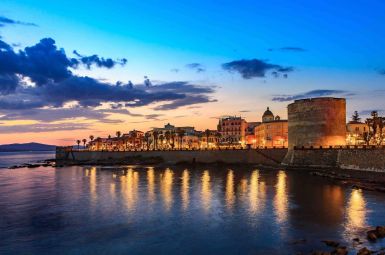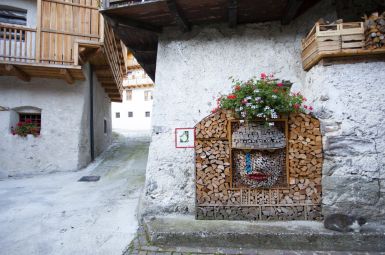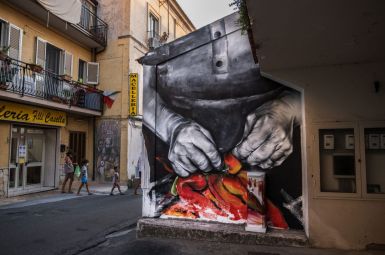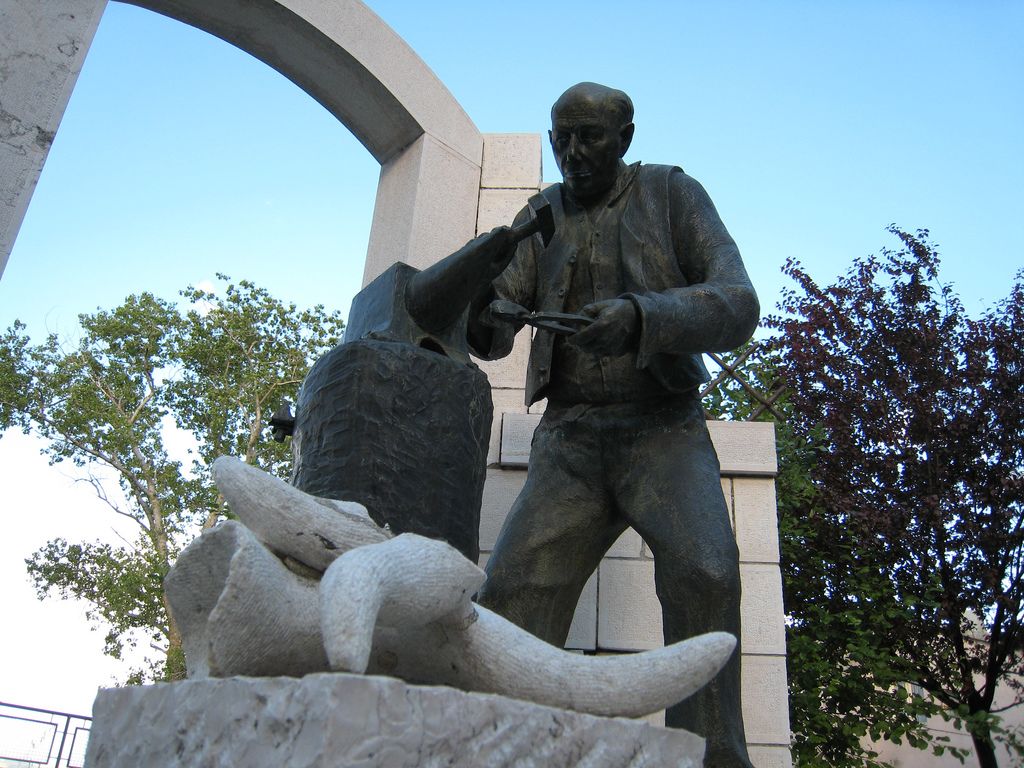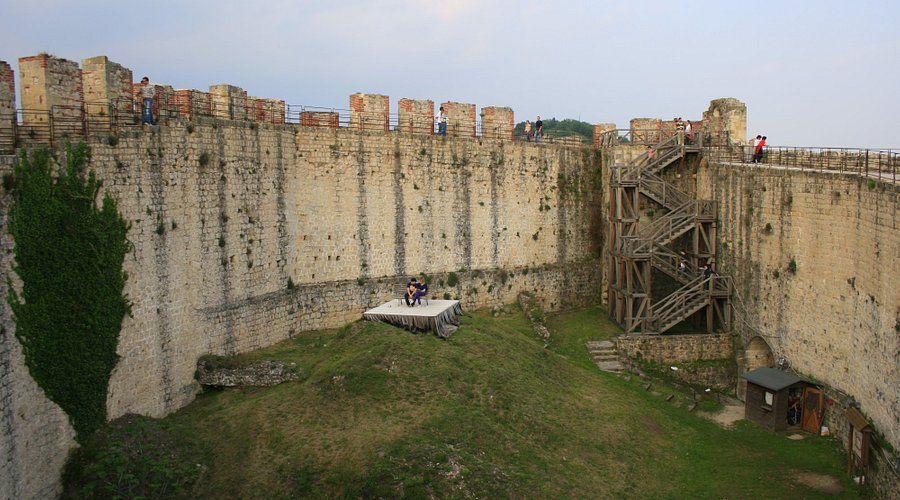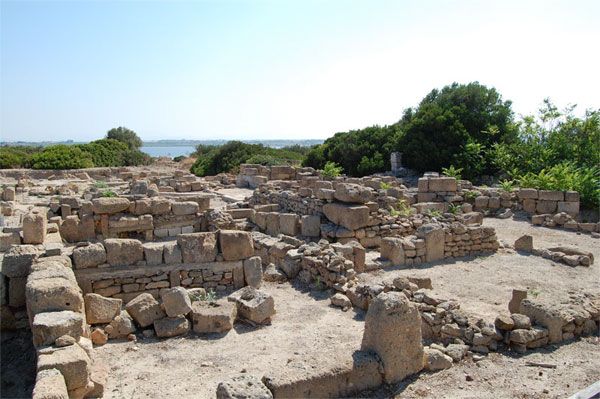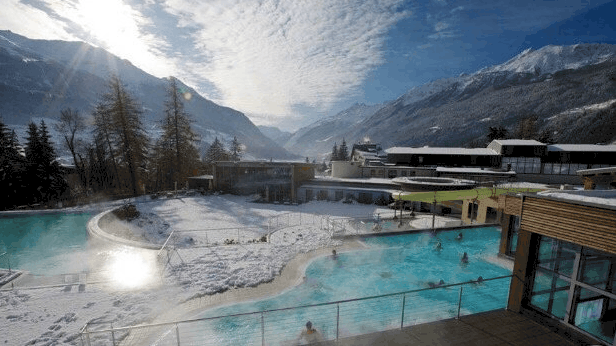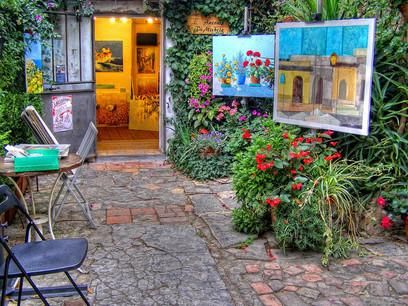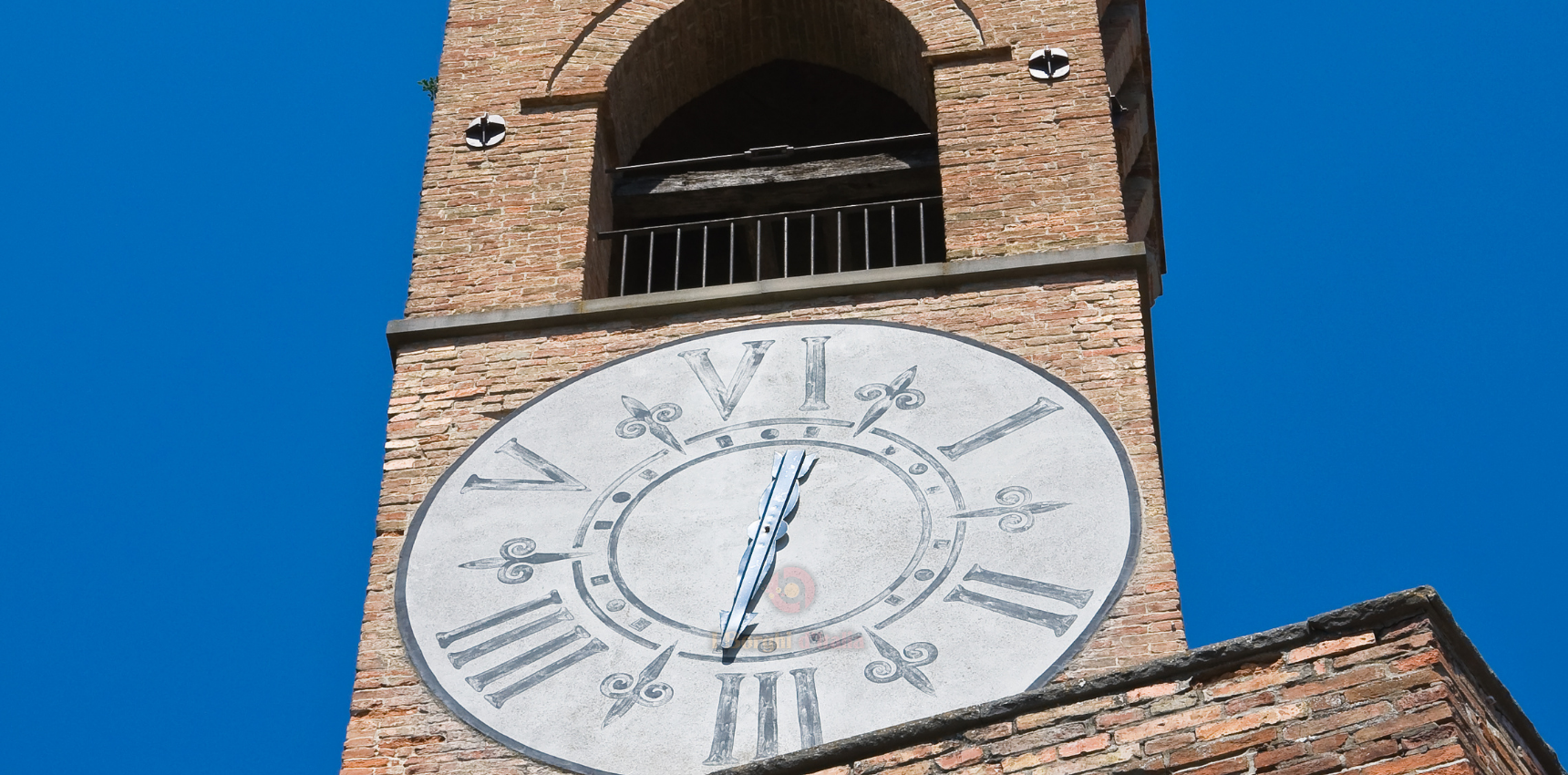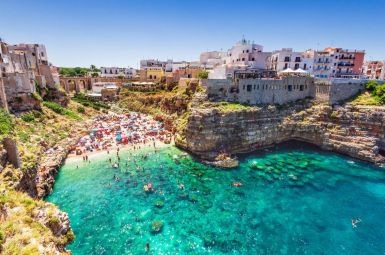
Autore: Editore
Polignano a Mare: Il Borgo Dove I Muri Parlano. E Raccontano Storie d’Amore e Libertà
Cari lettori de I borghi d’Italia.com, c’è un luogo in Puglia dove la bellezza naturale delle scogliere a strapiombo sull’Adriatico non basta a descriverne il fascino. Polignano a Mare è un’esperienza sensoriale, ma soprattutto, è un borgo unico per la sua voce, una voce che risuona dai suoi vicoli: quella della poesia urbana.
Polignano, celebre in tutto il mondo per essere la culla del grande Domenico Modugno (Mr. Volare), custodisce una curiosità che la distingue nettamente da tutti gli altri borghi italiani: la sua trasformazione in un’immensa, continua opera letteraria a cielo aperto.
📝 L’Eredità Poetica: Il Fascino dei Muri Scritturati
Per anni, gli abitanti e i visitatori che si sono addentrati nel dedalo del centro storico di Polignano si sono imbattuti in frasi, aforismi e citazioni poetiche scritte sui muri, sulle scalinate, sulle vecchie porte e persino sui pezzi di ceramica incastonati nelle pareti.
L’artefice di questa singolare e continua performance artistica è un abitante del luogo che si firma come “Guido il Flâneur”.
- Il Concetto: Il Flâneur (termine francese che indica colui che vaga senza meta, osservando e vivendo la città) ha trasformato il borgo non solo in una galleria d’arte, ma in una vera e propria tela letteraria. Le sue scritte non sono graffiti casuali, ma interventi poetici mirati, spesso dedicati all’amore, alla libertà, alla bellezza del mare e, non a caso, a Polignano stessa.
- L’Impatto Visivo: L’uso di una calligrafia unica, elegante e sempre riconoscibile, rende queste frasi parte integrante dell’architettura bianca del borgo, offrendo ai visitatori spunti di riflessione in ogni angolo. Non c’è vicolo cieco o scalinata nascosta che non celi una perla di saggezza o un verso d’amore.
Questa abitudine ha generato una vera e propria tendenza culturale, rendendo Polignano un’icona di quel slow living che spinge a rallentare per leggere, meditare e assorbire la bellezza del paesaggio e delle parole. Si può dire che, a Polignano, la poesia è il suo secondo, fondamentale elemento architettonico.
⚓ La Curiosità Nascosta di Polignano
Tra le molteplici grotte marine che perforano la scogliera di Polignano, ve n’è una in particolare che nasconde una leggenda suggestiva. La celeberrima Grotta delle Rondinelle non deve il suo nome solo al fatto che è meta migratoria di questi uccelli. Secondo l’antica tradizione locale, quando si verificavano forti tempeste in mare aperto, la rondine madre, simbolo di protezione, si recava a depositare il suo nido con i piccoli all’interno di questa grotta, considerata il rifugio più sicuro della costa. Per gli antichi marinai di Polignano, questa grotta divenne quindi un simbolo di riparo e speranza, un santuario naturale dove la vita trionfava sulla forza implacabile della natura.
Alghero: Il Borgo Sardo Dove La Storia non ha Bisogno di Traduzione
Amici de I borghi d’Italia.com, nel cuore della Riviera del Corallo, esiste un borgo fortificato che non è semplicemente in Italia, ma è, per vocazione e storia, un frammento di Spagna incastonato in Sardegna: Alghero.
Conosciuta in tutto il mondo come la “Barceloneta” (la piccola Barcellona), Alghero è celebre per le sue imponenti mura, il mare cristallino e l’abbondanza di corallo rosso. Ma la vera, affascinante curiosità che la rende unica nel panorama italiano non risiede nelle sue pietre o nelle sue onde, bensì nelle sue parole.
🗣️ La Curiosità Linguistica: Il Catalano Senza Tempo di Alghero
Il motivo per cui Alghero si distingue da ogni altro borgo italiano è il suo straordinario e tenace legame linguistico con la Catalogna.
Il catalano non è qui un ricordo del passato, ma una lingua viva e parlata.
Dopo la conquista da parte degli Aragonesi nel lontano 1353, la popolazione sarda fu in gran parte deportata e la città venne ripopolata con coloni provenienti direttamente dalla Catalogna. Questo evento traumatico e storico ha plasmato l’identità di Alghero in modo indelebile.
Ancora oggi, una parte significativa degli abitanti utilizza il catalano algherese come lingua madre. Camminando tra i carrer (le vie) del centro storico, potreste sentire conversazioni in una lingua che sembra una melodia straniera, ma che affonda le radici nella storia mediterranea.
Questo fenomeno non è solo culturale, è politico e identitario. Il Comune di Alghero riconosce ufficialmente il catalano e ne promuove l’uso, tanto che i cartelli stradali nel centro storico riportano spesso la doppia denominazione: in italiano e in catalano. È l’unica città italiana a godere di questo statuto.
Il risultato? Visitare Alghero significa fare un viaggio nel tempo e nello spazio, sperimentando una cultura che è contemporaneamente sarda, italiana e catalana. Un melting pot linguistico che trasforma una semplice visita turistica in un’esperienza di immersione storica profonda e inaspettata.
👑 L’Elogio di un Imperatore
Viaggiare ad Alghero è camminare sulle orme di figure storiche di immenso calibro.
La città fu visitata nel 1541 da uno dei personaggi più potenti dell’epoca: l’imperatore Carlo V d’Asburgo. Dopo averla osservata dalle mura, l’Imperatore rimase talmente impressionato dalla sua bellezza, dalla sua posizione strategica e dalla fedeltà dei suoi abitanti, che la definì con una frase che è rimasta scolpita nella storia algherese:
“Bonita y bien assentada” (graziosa e ben munita)
Non solo, si narra che l’Imperatore nominò i suoi abitanti “todos caballeros” (tutti cavalieri), un titolo onorifico che sottolineava il prestigio e il coraggio della comunità algherese, un orgoglio che ancora oggi si respira forte tra i bastioni.
Mezzano, Trentino: Non Solo Montagne, Ma L’Incredibile Borgo Dove L’Arte Nasce dalla Legna
Amici de I borghi d’Italia.com, lasciamo per un momento i grandi centri per addentrarci nel cuore autentico del Trentino, nella valle del Primiero. Qui, tra le maestose Dolomiti, si nasconde un borgo che ha saputo trasformare un elemento quotidiano e rurale in una vera e propria forma d’arte: Mezzano.
Riconosciuto come uno dei Borghi più Belli d’Italia, Mezzano non deve la sua fama solo alla magnifica cornice alpina, ma a un’iniziativa culturale che lo ha reso unico nel panorama nazionale. Qui, la creatività si manifesta in modo inaspettato, partendo dal pilastro della vita contadina e montana: la legna.
🪵 La Magia dei “Cataste & Canzei”: Un Museo a Cielo Aperto
La vera essenza e la curiosità più affascinante di Mezzano risiede in un progetto che ha preso piede negli ultimi anni, coinvolgendo l’intera comunità: “Cataste & Canzei”.
In un borgo alpino, è naturale vedere i mucchi di legna accatastati per l’inverno (cataste). Ma a Mezzano, le cataste non sono semplici depositi funzionali. Sono diventate vere e proprie opere d’arte temporanee. Artisti locali e internazionali hanno trasformato la legna da ardere in sculture tridimensionali e installazioni che decorano angoli e facciate delle case.
- Sculture Effimere: Vedrete mucchi di legna che riproducono la sagoma di un violino, un volto umano, un animale del bosco o intricate geometrie astratte. Ogni catasta racconta una storia, rendendo l’atto di conservare la legna un gesto di bellezza quotidiana.
- Identità Locale: Questo progetto ha ridefinito l’identità del borgo. Mezzano non è solo bello, ma è vivo e creativo. Passeggiare per i vicoli è come visitare un museo d’arte contemporanea all’aperto, dove le opere cambiano con le stagioni e vengono consumate dal tempo, per poi rinascere con nuove forme l’anno successivo.
Questa iniziativa è la dimostrazione perfetta di come la tradizione possa fondersi con l’innovazione artistica, regalando ai visitatori un’esperienza visiva indimenticabile e profondamente legata al territorio.
🧐 La Curiosità Nascosta di Mezzano
Mezzano detiene una particolarità storica e architettonica legata alla sua antica struttura abitativa. Il borgo non è un tipico insediamento sparso, ma si sviluppa attorno a un nucleo compatto, un vero e proprio capolavoro di edilizia rurale. La curiosità sta nel fatto che, per ottimizzare lo spazio vitale in un ambiente montano complesso, quasi tutte le case del centro storico sono state costruite con una struttura a “casa-torre” o “casa-forte”. Queste non erano torri difensive nel senso stretto del termine, ma abitazioni sviluppate in altezza (spesso tre o quattro piani) per avere la stalla e la cantina al piano terra, la zona giorno sopraelevata e il granaio sotto il tetto. Questa densità e verticalità, insolita per molti borghi alpini, ha contribuito a preservare il suo affascinante aspetto medievale e a conferirgli un’armonia architettonica unica, interrotta solo dalle forme colorate delle cataste d’arte.
Mezzano è un viaggio per l’anima e per gli occhi.
Diamante, Calabria: Non Solo Peperoncino. Ecco Il Segreto Nascosto del Borgo “Più Dipinto d’Italia”
Cari esploratori de I borghi d’Italia.com, vi portiamo in un angolo della Calabria Tirrenica dove l’arte non si guarda nei musei, ma si vive camminando. Stiamo parlando di Diamante, il borgo noto come la “Perla del Tirreno” e la “Città del Peperoncino”. Ma sotto la vivace facciata piccante, si nasconde una storia di colori e creatività unica in Italia.
Diamante è celebre in tutto il mondo per il suo legame indissolubile con il peperoncino, al quale dedica ogni anno un festival che attira migliaia di visitatori. Tuttavia, la sua vera, straordinaria peculiarità, che la rende un borgo d’arte a cielo aperto, è un’altra.
🎨 La Tela a Cielo Aperto: Quando i Muri Parlano
A partire dai primi anni ’80, Diamante ha intrapreso un percorso di trasformazione artistica senza precedenti che l’ha resa il borgo con il maggior numero di Murales d’Italia.
L’idea, nata dal pittore Nani Razetti e supportata da un lungimirante mecenate, l’allora Sindaco, era semplice ma rivoluzionaria: trasformare le anonime pareti del centro storico in tele per raccontare la storia, la cultura e le tradizioni della Calabria.
Oggi, il borgo vanta oltre 150 opere murarie sparse tra i vicoli e le piazzette, realizzate da artisti nazionali e internazionali. Passeggiare per Diamante è come visitare una galleria d’arte moderna, dove ogni svolta rivela un nuovo racconto: pescatori, leggende, ritratti di vita quotidiana e, ovviamente, omaggi al mare e al peperoncino. Questa scelta audace ha rivitalizzato il centro storico, trasformando quello che era un semplice borgo costiero in una destinazione culturale imperdibile.
🌊 L’Incredibile Isola di Cirella: La Storia di un Borgo Gemello
Il fascino di Diamante è amplificato dalla vista costante che si ha sulla vicina Isola di Cirella, un piccolo scoglio disabitato che emerge a poche bracciate dalla costa. L’isola è un ecosistema protetto e un paradiso per i subacquei, ma la sua vera curiosità non è geologica, bensì storica.
🧐 La Curiosità Nascosta di Diamante
La vera, affascinante curiosità di Diamante è legata al suo originale borgo gemello, Cirella. Il paese che oggi vediamo con i suoi murales non era l’unico centro abitato di importanza nella zona. Fino al 1806, esisteva infatti un’altra cittadina, chiamata appunto Cirella Vecchia, situata su un’altura non distante da Diamante e oggi conosciuta come “Cirella fantasma” o “ruderi di Cirella”.
Cirella Vecchia, non l’isola o il moderno quartiere costiero, era un importante centro abitato, ma fu completamente rasa al suolo dalle truppe di Napoleone durante l’occupazione francese del Regno di Napoli. Dopo la distruzione, gli abitanti superstiti si spostarono verso la costa, fondando il nucleo dell’attuale insediamento. Diamante, che era un villaggio più piccolo, assunse progressivamente il ruolo di centro principale. Il destino di Cirella Vecchia, spazzata via dalla storia, è un potente memento delle vicissitudini del Meridione, e visitare oggi i suoi ruderi, che dominano il mare e l’isola, offre uno spunto di riflessione unico sul passato che ha plasmato l’attuale identità di Diamante.
Diamante è dunque un borgo stratificato: piccante in tavola, colorato sui muri e profondo nella storia. Un luogo dove l’arte e il passato si fondono sotto il sole della Calabria.
Subiaco, Lazio: Non Solo Monasteri, Ma la Culla Tecnologica del Sapere Italiano
Amici de I borghi d’Italia.com, quando si pensa a Subiaco, la mente corre immediatamente a San Benedetto, ai Sacri Monasteri e al fascino ascetico del Sacro Speco. Ma questo borgo, incastonato nella Valle dell’Aniene in provincia di Roma, custodisce un segreto di portata storica e tecnologica che lo rende un pioniere assoluto della cultura italiana.
Subiaco, con la sua Rocca Abbaziale che domina un paesaggio di selvaggia bellezza e i suoi ponti che scavalcano le acque limpide dell’Aniene, è il luogo dove la spiritualità ha incontrato la storia. La sua etimologia stessa, derivante dal latino Sub Lacum (sotto i laghi), ci parla di un passato imperiale, legato alle sfarzose ville di Nerone.
Eppure, il vero primato di Subiaco non risiede solo nelle vestigia romane o nella Regola benedettina, ma in un evento che ha cambiato per sempre il volto della comunicazione e della diffusione della conoscenza nel nostro Paese.
🖨️ Il Primato Nascosto: Qui è Nata l’Editoria Italiana
È una storia poco conosciuta ma di enorme rilievo: Subiaco fu la sede della prima stamperia attiva sul suolo italiano.
Siamo nel 1465, un periodo in cui l’Europa stava lentamente abbracciando la rivoluzione della stampa a caratteri mobili introdotta da Gutenberg. Mentre il resto della penisola era ancora legato alla faticosa e lenta arte della copiatura amanuense, due chierici tedeschi, Arnold Pannartz e Konrad Sweynheym, vennero chiamati a Subiaco dall’Abate Cardinale Giovanni da Turrecremata.
Essi si stabilirono nel Monastero di Santa Scolastica e, in questo isolato e spirituale borgo, diedero vita a una vera e propria attività tipografica. I primi libri stampati in Italia uscirono dalle loro presse a Subiaco. Tra questi capolavori troviamo il De Oratore di Cicerone e il De Civitate Dei di Sant’Agostino.
Questo evento non fu solo un trasferimento di tecnologia; fu una nascita culturale. Subiaco non si limitò a replicare i caratteri tedeschi, ma i due tipografi crearono qui un nuovo carattere tipografico, noto come “Sublacense”, un carattere romanico più morbido e arrotondato, considerato l’antenato dei moderni caratteri italici.
Il borgo, immerso nel silenzio dei Simbruini, divenne per un breve, ma cruciale, periodo la capitale editoriale della penisola, la porta d’accesso per la diffusione del sapere in Italia. Questo è il vero, affascinante primato di Subiaco: aver acceso la luce della cultura moderna, prima di Roma o Venezia.
🧐 La Curiosità Nascosta di Subiaco
A sottolineare il legame profondo e duraturo di Subiaco con il sapere, c’è un dettaglio curioso relativo alla Rocca Abbaziale dei Borgia, un simbolo imponente del borgo che ospitò personaggi illustri. Lucrezia Borgia, una delle figure più controverse e affascinanti del Rinascimento italiano, nacque proprio all’interno di questa Rocca, dove il padre, il futuro Papa Alessandro VI (Rodrigo Borgia), risiedeva come Abate commendatario. La particolarità sta nel fatto che, per diversi anni, la Rocca è stata gestita dalle monache benedettine, invertendo il ruolo tradizionale e custodendo questo maniero laico, luogo di potere temporale e di nascite illustri, sotto l’egida della spiritualità e della cura monastica.
Subiaco, dunque, non è solo una meta per pellegrini e amanti della natura, ma un luogo dove l’innovazione e la storia hanno lasciato un segno indelebile. Vi invitiamo a visitare il borgo dove la spiritualità ha incontrato la rivoluzione della stampa.
Frosolone, Molise: L’Insospettabile Borgo che Ha Forgiato un’Eccellenza Globale e la Curiosità Nascosta
Cari amici de I borghi d’Italia.com, il Molise è una terra di tesori inesplorati. Oggi vi portiamo a Frosolone, un borgo che, pur essendo incastonato tra i monti, ha saputo forgiare un’identità artigianale che ha attraversato i confini nazionali, legata a un oggetto apparentemente semplice, ma fondamentale: il coltello.
Frosolone, in provincia di Isernia, non è solo paesaggi incontaminati e storia pastorale. È il cuore pulsante di una tradizione manifatturiera che affonda le radici in secoli di storia: l’arte della forgiatura e dell’affilatura.
🛠️ Frosolone: La Capitale Segreta della Coltelleria Italiana
Quando si parla di eccellenze artigianali italiane, si pensa subito ai grandi distretti. Eppure, Frosolone è stata storicamente una fucina di maestri coltellinai la cui abilità non ha nulla da invidiare alle produzioni più blasonate.
Questa tradizione è nata dalla necessità pratica. In un territorio montano legato alla pastorizia e all’agricoltura, l’utensile da taglio era indispensabile. Nel tempo, l’abilità si è affinata, trasformando la necessità in arte. Le lame prodotte qui, note per la loro precisione, durata e il design elegante e funzionale (come il celebre coltello a scatto frosolonese), sono diventate ambite da collezionisti, professionisti della cucina e persino chirurghi.
Oggi, camminare per le vie del borgo significa imbattersi nelle botteghe storiche, dove l’acciaio incandescente e l’incudine sono ancora gli strumenti di un mestiere tramandato di padre in figlio. Frosolone è la dimostrazione che un borgo può diventare un polo di eccellenza globale basandosi su una sapienza antica e una specializzazione unica.
🧐 La Curiosità Nascosta di Frosolone
Esiste un dettaglio affascinante e poco noto legato alla tradizione della coltelleria di Frosolone. La particolarità sta nel fatto che, anticamente, i coltelli e gli attrezzi da taglio prodotti qui non venivano venduti solo in loco, ma erano i coltellinai stessi (i cosiddetti “ferrai”) che, armati di mola a pedale, intraprendevano lunghe migrazioni stagionali. Partivano dal borgo montano e si spingevano fino alle regioni costiere e oltre, percorrendo a piedi centinaia di chilometri. Lo scopo non era solo vendere i prodotti finiti, ma offrire un servizio di affilatura a domicilio, passando di masseria in masseria, di paese in paese. Questa migrazione commerciale e artigianale era talmente estesa che ha contribuito a diffondere la fama e la qualità delle lame frosolonesi in tutto il Centro-Sud Italia, trasformando i coltellinai in veri e propri ambasciatori itineranti del loro borgo e della sua ineguagliabile abilità.
Frosolone è dunque la perfetta sintesi tra la quiete del paesaggio molisano e la vivacità di una tradizione artigiana di altissimo livello. È una tappa obbligata per chi vuole toccare con mano un pezzo di storia manifatturiera italiana.
Lovere, Lombardia: Il Borgo del Lago d’Iseo e il Segreto del Suo Palcoscenico Internazionale
Cari esploratori de I borghi d’Italia.com, se pensate che Lovere sia solo uno dei più affascinanti approdi sul Lago d’Iseo, preparatevi a scoprire il dettaglio che lo lega, con un filo sottile e prezioso, a un’eredità artistica di fama mondiale. Questo borgo lombardo non è solo bellezza lacustre, ma un custode di storie inaspettate.
Lovere è celebre per le sue architetture eleganti, per l’abbraccio delle montagne che si specchiano nell’acqua e per l’atmosfera quieta ma raffinata che la distingue. Tuttavia, è un luogo specifico, incastonato nel suo tessuto urbano, a rivelare la sua vera e profonda curiosità internazionale.
🖼️ Il Legame Tra Lovere e l’Arte del Rinascimento Veneziano
Il gioiello che custodisce questo segreto è l’Accademia Tadini. Non è un museo locale qualsiasi, bensì una delle prime istituzioni private in Italia dedicate all’arte, voluta dal conte Luigi Tadini all’inizio del XIX secolo come luogo di studio e conservazione.
La curiosità che lega Lovere al grande palcoscenico mondiale riguarda l’opera più significativa conservata al suo interno: la Stele Tadini, ovvero il commovente monumento funebre in marmo realizzato da Antonio Canova per la giovane Paolina Tadini, prematuramente scomparsa.
Tuttavia, il vero punto di contatto con un’eredità di respiro internazionale si trova nella pinacoteca. Qui, Lovere custodisce un capolavoro che è l’orgoglio del borgo e il sogno di molti grandi musei: l’unica opera di Jacopo Bellini, padre dei più celebri Giovanni e Gentile Bellini e maestro fondamentale del Rinascimento Veneto, tuttora conservata in loco e non in grandi gallerie internazionali.
Questo fa sì che Lovere non sia soltanto un borgo di splendidi panorami, ma un vero e proprio microcosmo museale dove si possono ammirare capolavori che hanno plasmato la storia dell’arte italiana, in un contesto inaspettato, lontano dalla frenesia delle capitali.
🧐 La Curiosità Nascosta di Lovere
La curiosità più sorprendente e meno nota di Lovere riguarda proprio il suo impatto sui grandi artisti, in particolare Lady Mary Wortley Montagu. Questa scrittrice, viaggiatrice e intellettuale britannica del Settecento, figura rivoluzionaria e pioniera della vaccinazione contro il vaiolo in Occidente, visse i suoi ultimi anni in Italia. Ebbene, si ritirò a Lovere. Scelse questo borgo isolato del Lago d’Iseo come sua ultima, intima dimora italiana, non per caso, ma per la sua estrema tranquillità e la bellezza naturale. Il suo soggiorno qui, documentato dalle sue lettere, dimostra come Lovere, già nel XVIII secolo, fosse un rifugio per menti brillanti e anticonformiste, un luogo capace di offrire pace e ispirazione ben lontano dai circuiti turistici più battuti. Questo rende Lovere non solo un luogo da ammirare, ma un vero e proprio “buen retiro” di storia intellettuale europea.
Asolo, Veneto: Il Borgo dei Cento Orizzonti e La Curiosità Architettonica Nascosta
Amici de I borghi d’Italia.com, se cercate un luogo in Veneto dove la storia, la poesia e una bellezza paesaggistica mozzafiato si fondono, dovete segnare sul vostro itinerario Asolo. Questo gioiello, incastonato tra le colline trevigiane, è conosciuto non a caso come il “Borgo dei Cento Orizzonti”.
Da secoli, Asolo attrae e incanta artisti, scrittori e viaggiatori. La sua atmosfera elegante e colta è un richiamo irresistibile, un luogo dove la serenità è palpabile e il panorama si apre in una vista che spazia dalla pianura veneta fino alle Dolomiti, in un gioco di luci e sfumature che cambia a ogni ora del giorno.
📜 Un Palcoscenico per Menti Illustri
Asolo non è solo bello; è un luogo che ha nutrito la mente di personaggi straordinari.
Fu la casa (o il rifugio amato) della regina Caterina Cornaro, che qui visse il suo esilio trasformando la corte asolana in un centro di cultura rinascimentale. Successivamente, ha accolto la divina attrice teatrale Eleonora Duse, che scelse Asolo come suo “buen retiro” e ultima dimora. Anche il viaggiatore e scrittore inglese Robert Browning vi trovò ispirazione, tanto da dedicare una raccolta di poesie al borgo, intitolata Asolando.
Questo genius loci è ciò che rende la passeggiata tra i suoi portici e le sue vie un’esperienza quasi letteraria. Il Castello della Regina, le ville palladiane e i vicoli perfettamente conservati non sono solo architettura, ma pagine di un grande libro aperto sulla storia italiana.
🏛️ La Curiosità Architettonica: Il Segreto delle Mura Che Parlano
C’è un dettaglio straordinario ad Asolo, spesso ignorato dal visitatore frettoloso, che racconta la sua storia in modo unico: la presenza delle case-mura medievali.
L’intera cinta muraria che circonda il centro storico è un’opera ingegneristica e difensiva di grande rilievo. Tuttavia, la curiosità più affascinante riguarda il modo in cui i residenti, nel corso dei secoli, hanno saputo integrare le proprie abitazioni direttamente nella struttura difensiva. Non stiamo parlando di case costruite vicino alle mura, ma di vere e proprie case che sono le mura.
In molti tratti, le abitazioni sono state addossate al paramento murario, utilizzando la struttura fortificata come parete portante posteriore o laterale. Questo non fu solo un espediente per risparmiare materiale o spazio, ma una strategia che garantiva un isolamento termico e una sicurezza fuori dal comune. Osservando attentamente le facciate di alcune case lungo il perimetro, si può notare come le finestre e i balconi siano stati aperti in un secondo momento, proprio sul corpo della fortificazione, trasformando un elemento militare in un elemento abitativo senza soluzione di continuità. Questa fusione tra fortezza e vita quotidiana è una testimonianza unica della pragmatica e ingegnosa architettura dei borghi veneti.
Asolo non è solo un borgo da visitare, ma un’emozione da vivere e una storia da ascoltare. Non perdete l’occasione di perdervi nei suoi Cento Orizzonti.
Marsala, Sicilia: Non Solo Vino. Il Borgo Che Nasconde un Passaggio Segreto Verso l’Antica Lilibeo
Amici de I borghi d’Italia.com, quando si parla di Marsala, il pensiero corre immediatamente al suo nettare ambrato, il vino liquoroso che ha reso celebre il nome di questa città in tutto il mondo. Ma questo borgo, affacciato sul vibrante Mediterraneo, è una matrioska di storie, dove sotto la superficie rinascimentale si cela un passato molto più antico e misterioso.
Marsala è l’incarnazione della storia siciliana: fenici, romani, arabi e normanni hanno lasciato il loro segno, creando una stratificazione culturale e architettonica unica. Il suo impianto urbano, elegante e barocco, nasconde però un segreto che ci riporta indietro di oltre duemila anni.
🏺 La Marsala Sotterranea: Sotto i Piedi, L’Antica Lilibeo
Prima che Marsala prendesse il suo nome (dall’arabo Marsa Allah, Porto di Dio), qui sorgeva Lilibeo (Lilybaeum), l’ultima roccaforte cartaginese in Sicilia. Quello che pochi sanno è che gran parte della vita di questa antica città non si svolgeva solo in superficie, ma anche nel sottosuolo.
Durante gli scavi archeologici condotti nel Novecento, ma che continuano ancora oggi, è venuto alla luce un complesso sistema di strade, necropoli e case romane, quasi interamente conservato sotto la città moderna. Lilibeo è una città “invisibile”, un borgo sotterraneo che si estende per un vasto chilometraggio.
Il vero punto focale è la scoperta di una fitta rete di cunicoli e passaggi che, si ritiene, fossero parte del sistema idrico o, addirittura, vie di fuga e di approvvigionamento risalenti all’epoca punica e romana. Camminare per le eleganti vie del centro storico significa, letteralmente, passeggiare sul tetto di un’antica civiltà.
🧐 La Curiosità Nascosta di Marsala
C’è un dettaglio meno conosciuto che lega in modo affascinante la storia di Lilibeo al borgo di Marsala. Durante l’epoca romana, la città era rinomata per essere un centro nevralgico di comunicazione marittima. La curiosità risiede nel fatto che, grazie alla sua posizione strategica, i Romani costruirono una “cripta a fornice” (una sorta di passaggio a volta) che collegava la costa con il cuore della città, permettendo un transito discreto e veloce di merci e, forse, di messaggeri. Questa struttura, oggi parzialmente visibile in alcune aree del centro, non era un comune tunnel, ma un sofisticato sistema di accesso che, secondo gli storici locali, servì come via segreta e privilegiata per i magistrati e gli alti funzionari che dovevano raggiungere rapidamente il porto senza attraversare le vie pubbliche affollate. Un vero e proprio passaggio VIP dell’antichità, che testimonia l’importanza geopolitica di Marsala in epoca imperiale, trasformando l’elegante borgo attuale nella custode di un backstage segreto della storia romana.
Marsala, dunque, offre molto di più del suo celebre bicchiere. È un viaggio nel tempo che aspetta solo di essere intrapreso, dalle sue mura in superficie fino al cuore nascosto di Lilibeo.
Saint-Vincent, Valle d’Aosta: Quando il Borgo è una “Perla” Termale tra Casinò, Storia e Montagne
Cari lettori de I borghi d’Italia.com, lasciatevi condurre in Valle d’Aosta, ma questa volta non solo per le vette. Vi presentiamo Saint-Vincent, un borgo che, grazie alla sua storia, alle sue acque e al suo inconfondibile glamour, si è guadagnato l’appellativo di “Riviera delle Alpi”.
Saint-Vincent è un luogo dove la tradizione alpina incontra un’eleganza raffinata. Il suo fascino è stratificato: si va dalle antiche radici romane e medievali, fino al benessere termale e al brivido del gioco. È questo mix unico di natura, salute e divertimento a renderlo una tappa obbligatoria nel cuore della Valle d’Aosta.
💧 L’Acqua Miracolosa: La Storia della “Fons Salutis”
Il destino di Saint-Vincent è stato plasmato da una sorgente d’acqua scoperta nel lontano 1770 da un abate, Jean-Baptiste Perret. Quest’acqua minerale, effervescente naturale e ricca di proprietà curative, fu subito battezzata “Fons Salutis” (Fonte della Salute).
Questa scoperta non solo diede impulso alla creazione di uno dei primi stabilimenti termali moderni in Italia, ma portò anche notorietà internazionale al borgo, trasformandolo in una meta di cura e villeggiatura per l’élite europea. Ancora oggi, le Terme di Saint-Vincent rappresentano un’oasi di benessere e relax, incastonate tra le maestose Alpi.
🎲 Il Centro del Glamour Alpino
Sebbene le Terme abbiano attratto la salute, fu un altro elemento a consolidare il prestigio di Saint-Vincent nel panorama italiano: il Casinò de la Vallée.
Inaugurato a metà del XX secolo, questo Casinò non è solo un tempio del gioco, ma un centro di intrattenimento a 360 gradi. Ha ospitato per decenni eventi culturali di risonanza nazionale, conferenze e spettacoli, fissando il borgo nell’immaginario collettivo come sinonimo di loisir di alto livello. Passeggiare per le vie di Saint-Vincent è ancora oggi respirare un’aria di belle époque alpina, dove l’eleganza si fonde con la roccia e il verde dei monti.
🧐 La Curiosità Nascosta di Saint-Vincent
Nonostante il Casinò e le Terme siano i suoi elementi più noti, la vera curiosità di Saint-Vincent si cela nell’architettura religiosa. La Chiesa Parrocchiale di Saint-Vincent (dedicata al Santo Patrono) non è un’unica entità: è il risultato di secoli di stratificazioni. La vera gemma nascosta è il sito archeologico scoperto sotto l’attuale chiesa, dove sono visibili i resti della primitiva chiesa romanica risalente all’XI secolo e, ancora più in profondità, i resti di un’antichissima area sepolcrale paleocristiana. Questo complesso sotterraneo e stratificato dimostra come un borgo moderno e proiettato nel lusso come Saint-Vincent poggi in realtà su radici storiche che affondano nell’Alto Medioevo, un tesoro archeologico spesso ignorato dai visitatori frettolosi che cercano solo le luci del Casinò.
Bussana Vecchia: D’Inverno, Il “Borgo degli Artisti” Si Trasforma nel Magico Villaggio di Babbo Natale
Cari lettori de I borghi d’Italia.com, c’è un luogo in Liguria dove l’arte non è solo esposta, ma è intrinseca in ogni pietra. Un borgo fantasma risorto grazie al genio creativo, che, nel silenzio ovattato dell’inverno, assume un fascino fiabesco, quasi fosse il nascondiglio segreto di Babbo Natale in Italia: parliamo di Bussana Vecchia.
Soprannominato affettuosamente il “Borgo degli Artisti”, Bussana Vecchia non è semplicemente un paese, ma una testimonianza vivente di resilienza e bellezza. Abbandonato dopo il violento terremoto del 1887, questo mucchio di rovine venne riportato in vita a partire dagli anni ’60 da una comunità di artisti, artigiani e sognatori provenienti da tutto il mondo.
❄️ Il Fascino Unico: Un Silenzio d’Oro che Sa di Magia
Se d’estate Bussana Vecchia è animata da turisti e da un fermento creativo costante, è durante i mesi invernali che rivela la sua anima più profonda e spettacolare.
Quando il sole è basso e l’aria si fa frizzante, il borgo assume un aspetto unico:
- Le Luci Calde: I laboratori artigiani, pur riducendo gli orari, lasciano filtrare dalle finestre piccole luci gialle e arancio che creano un contrasto magico con le pietre grigie e scure.
- Le Nevicate (Rare, ma Iconiche): Anche senza neve, la foschia mattutina e l’umidità del mare donano al borgo un’atmosfera nebbiosa e sospesa. Nelle rare occasioni in cui i fiocchi raggiungono la costa, Bussana Vecchia si trasforma realmente nel paesino dei racconti, con i vicoli silenziosi e i tetti antichi vestiti di bianco.
- Il Profumo di Legna: L’odore inconfondibile dei camini accesi, unito al profumo della terra e del mare, riempie i carrugi (i vicoli liguri), evocando immediatamente l’accoglienza e il calore delle feste natalizie.
È il luogo ideale per chi cerca l’autenticità del Natale lontano dal frastuono. Un borgo unico in Italia che vi aspetta per una visita che non potete assolutamente mancare.
🏺 La Vita Che Vince Sulla Rovina
Gli artisti hanno saputo trasformare le ferite del terremoto in tele e musei a cielo aperto. Le vecchie case sono diventate atelier, le piccole piazze ospitano sculture, e ogni muro racconta una storia di rinascita.
L’inverno permette di entrare in contatto più intimo con questa comunità: si ha la possibilità di chiacchierare a lungo con i maestri vetrai, i ceramisti o i pittori, scoprendo le tecniche e le storie che hanno trasformato un “paese morto” in un “paese d’arte”.
🧐 La Curiosità Nascosta di Bussana Vecchia
Nonostante l’abbandono ufficiale e il successivo ripopolamento artistico, per decenni la chiesa del paese, l’antica Santuario di Sant’Egidio, è rimasta senza tetto, con le volte crollate e la navata esposta alle intemperie. La curiosità è che, a differenza delle altre strutture che sono state in parte ricostruite dagli artisti o lasciate come rovine, la chiesa è rimasta volutamente così come il terremoto l’aveva lasciata, diventando una sorta di monumento permanente al disastro e alla memoria. È, di fatto, l’unico grande edificio del borgo in cui la natura e il tempo hanno avuto il sopravvento sull’intervento umano, fungendo da potente memento della fragilità dell’esistenza e, paradossalmente, della sua tenace bellezza.
Brisighella, Romagna: Il Borgo delle Tre Rocche tra Olio d’Eccellenza e Storia Lunare
Amici de I borghi d’Italia.com, preparatevi a innamorarvi di un luogo dove il tempo sembra essersi fermato e la storia si incontra con un’eccellenza agricola unica: Brisighella.
Incastonato nel cuore della Valle del Lamone, in Emilia-Romagna, questo borgo medievale non è solo una cartolina vivente, ma un tesoro di architettura, tradizioni e sapori che merita un viaggio lento e attento. Brisighella è dominata dalle sue iconiche “Tre Rocche” che vegliano sul paese: la Rocca Manfrediana, la Torre dell’Orologio e l’imponente Santuario del Monticino. Questo scenario, scolpito nel gesso, conferisce al luogo un fascino quasi lunare, mitigato dalla dolcezza delle colline circostanti.
🌳 L’Oro Verde di Brisighella: L’Olio che Parla di Romagna
Brisighella è celebre in Italia e nel mondo per il suo Olio Extra Vergine d’Oliva Brisighello. Non si tratta di un olio qualsiasi, ma di un’eccellenza talmente radicata nel territorio da aver ottenuto la prestigiosa certificazione DOP (Denominazione di Origine Protetta).
La storia olivicola qui è antichissima, favorita dal microclima e dal terreno gessoso che conferisce alle olive un profilo aromatico inconfondibile. Assaggiare l’olio di Brisighella non è solo un atto culinario, ma un’esperienza sensoriale che racconta la tenacia e la passione degli agricoltori romagnoli. Questo “oro verde” è il perfetto emblema di come i piccoli borghi italiani sappiano custodire e tramandare tesori di inestimabile valore.
La Magia Architettonica: Un Treno Sospeso nel Tempo
Passeggiare per Brisighella significa perdersi in un labirinto di vicoli acciottolati, ma c’è un luogo in particolare che cattura l’immaginazione e merita ogni passo: la Via degli Asini.
Questa via coperta e sopraelevata è unica nel suo genere. Si tratta di un camminamento fortificato, costruito nel XII secolo, che corre lungo il fianco delle case e originariamente serviva da percorso di ronda difensivo. Il suo nome attuale, Via degli Asini, deriva dal fatto che, nei secoli successivi, veniva usata come via di accesso protetta e coperta dai birocciai e dai contadini che salivano con i loro animali (gli asini, appunto) per trasportare il gesso dalle cave soprastanti fino al paese. Camminare al suo interno, con le mezzelune di apertura che danno luce e scorci sul borgo sottostante, dà la sensazione di trovarsi a bordo di un treno sospeso nel tempo, un vero gioiello di ingegneria medievale perfettamente conservato.
La Curiosità Nascosta di Brisighella
Pochi sanno che l’iconica Torre dell’Orologio di Brisighella, che domina l’abitato con la Rocca Manfrediana, non ha sempre avuto l’aspetto che vediamo oggi. Originariamente, nel XIII secolo, la torre fu costruita per scopi militari come punto di avvistamento, e aveva una struttura molto più semplice e tozza. La sua trasformazione in Torre dell’Orologio è avvenuta solo molto più tardi. Dopo essere stata quasi completamente distrutta e ricostruita più volte, nel Settecento venne dotata del grande orologio a sei ore, un sistema che divideva il giorno in quattro periodi uguali, tipico di quel periodo storico. La vera particolarità, però, è che il meccanismo era così prezioso e così esposto al rischio di furti e danneggiamenti che fu deciso di installarlo all’interno di un armadio di legno appositamente costruito per proteggerlo, garantendo così la sua sopravvivenza fino ai giorni nostri.
